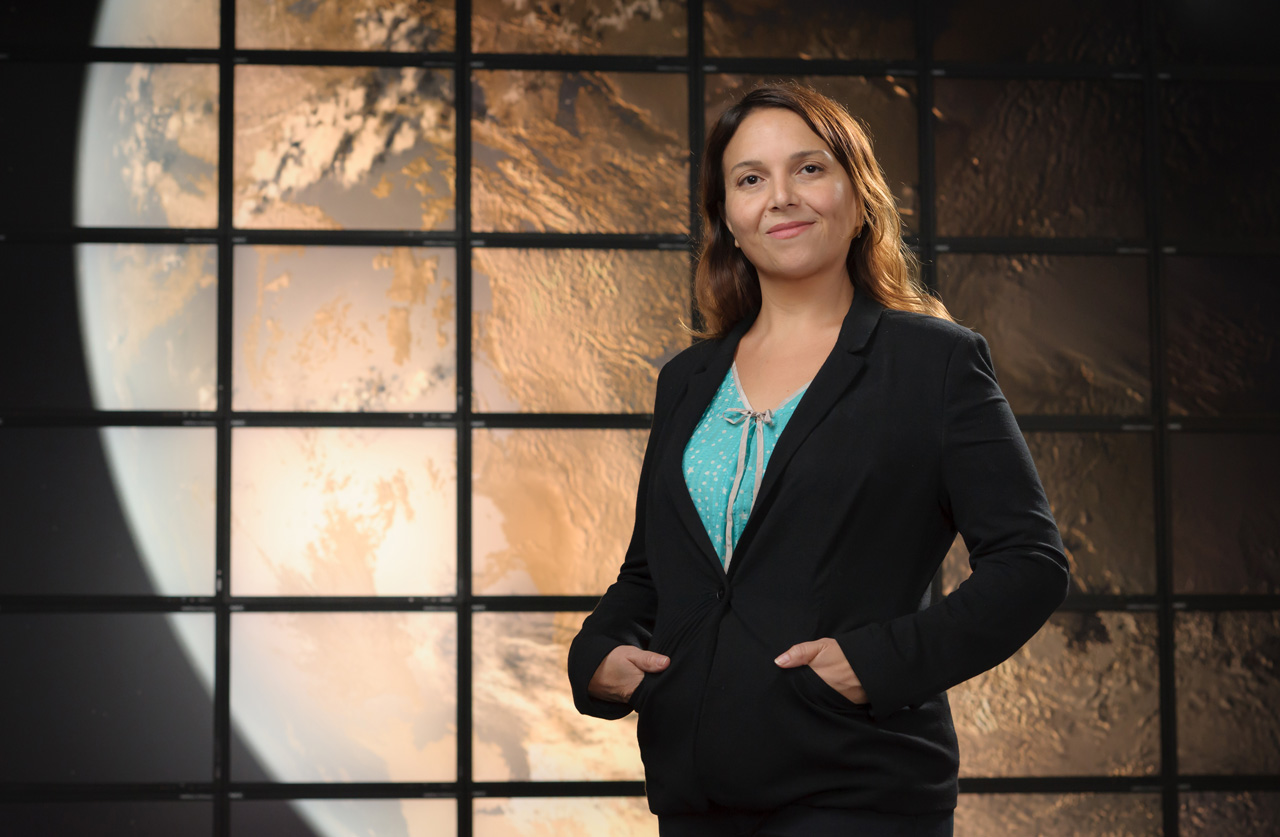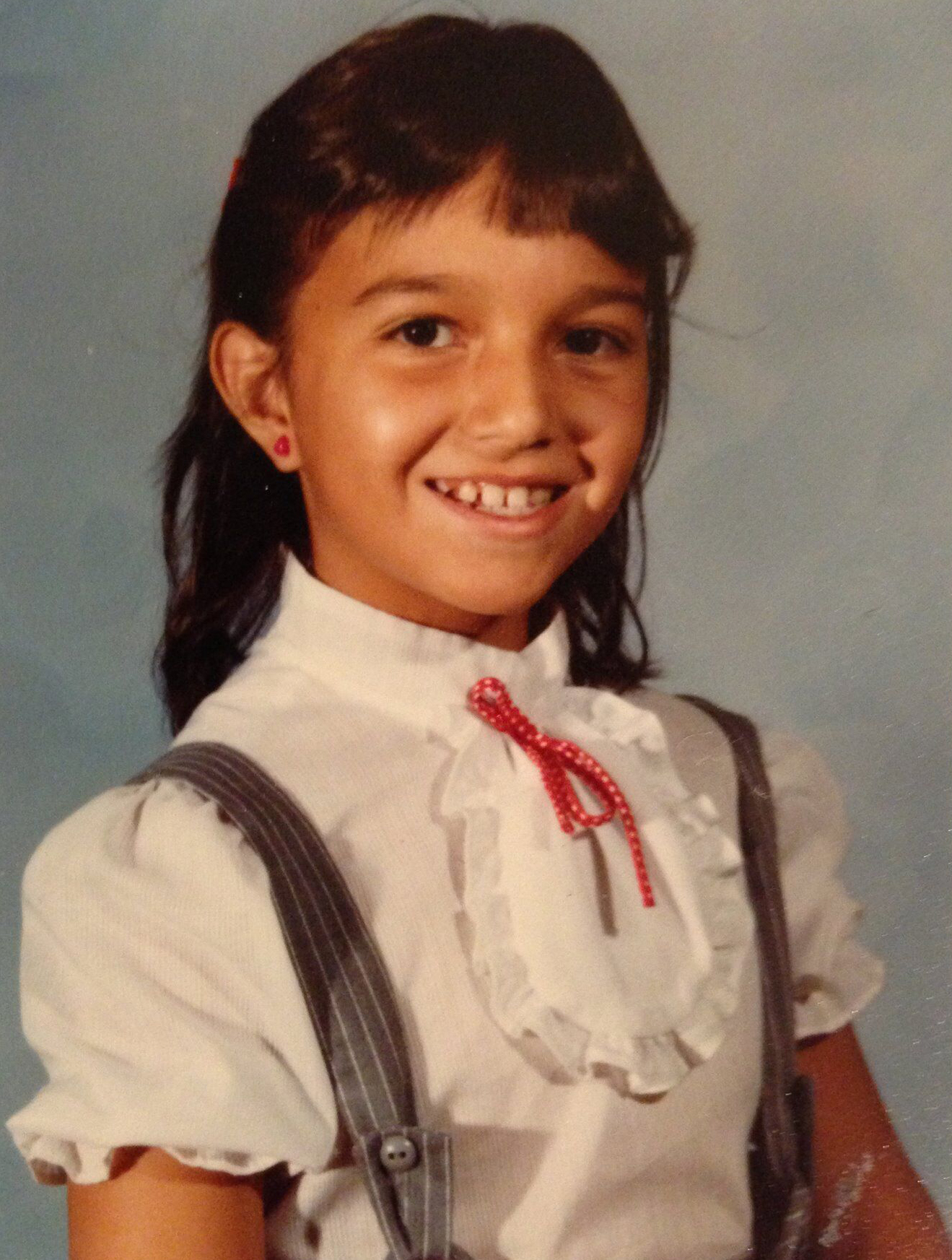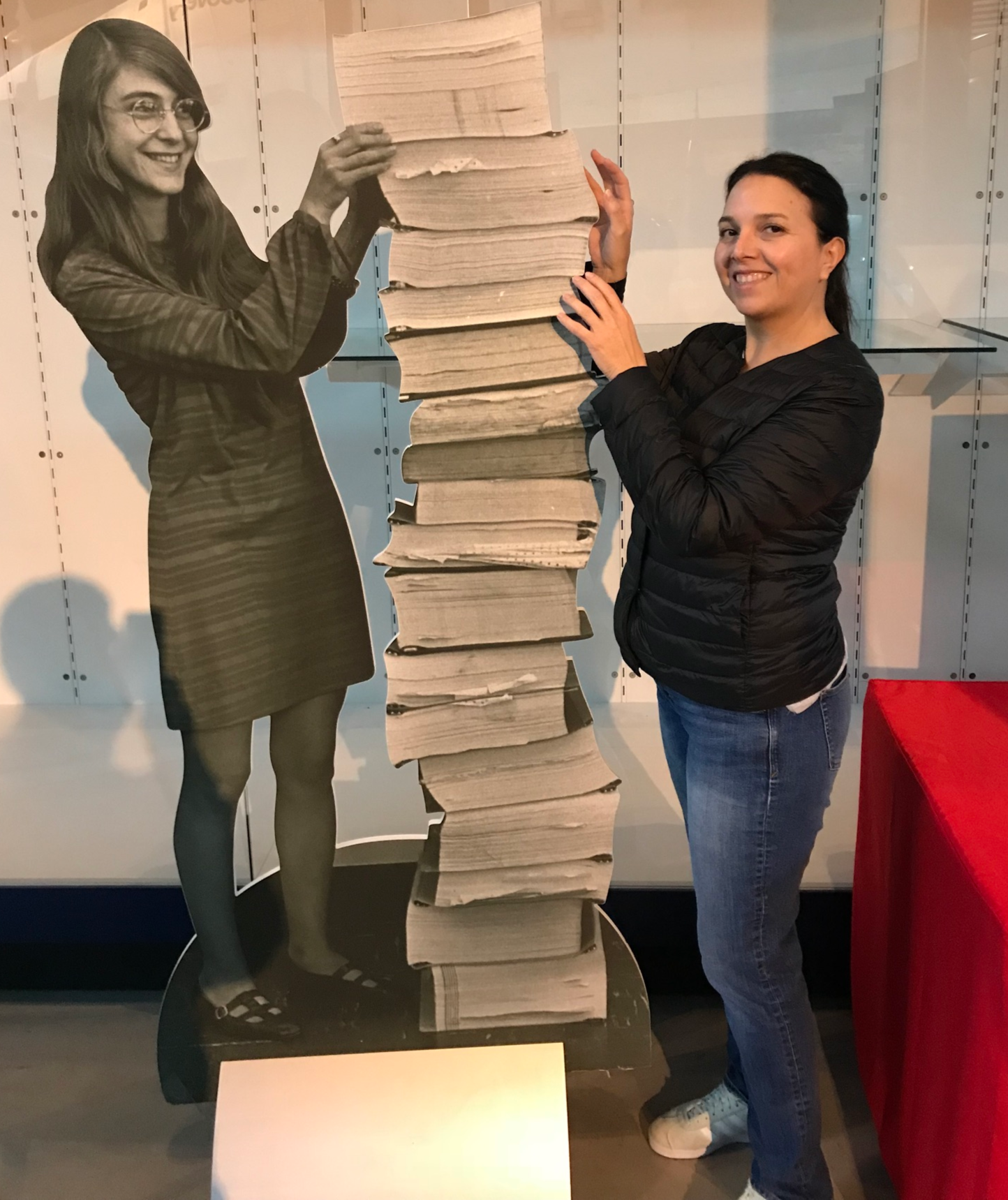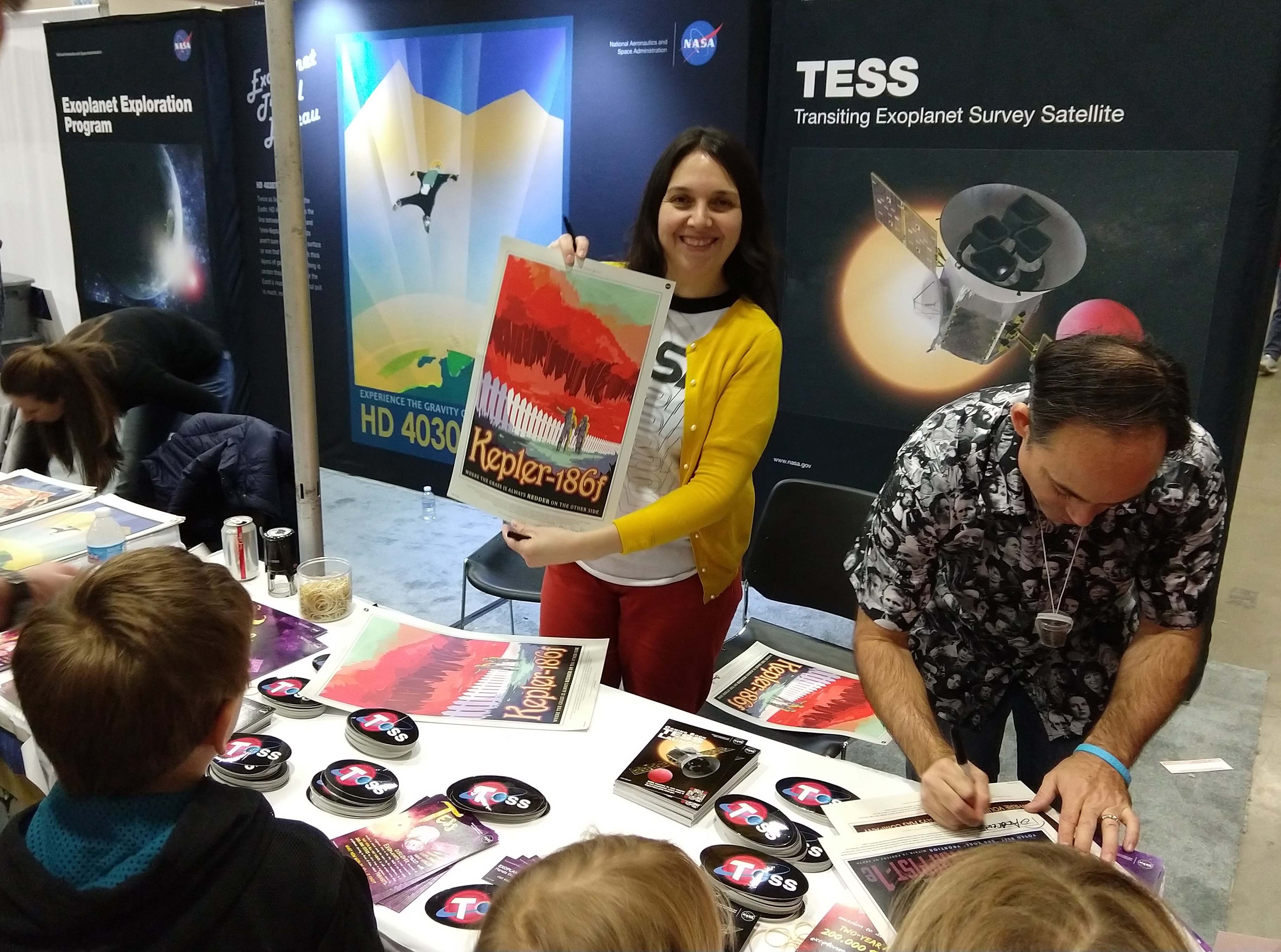
Elisa Quintana
Astrophysicist - Goddard Space Flight Center
For a scientist who led the remarkable discovery of the first Earth-sized planet beyond our solar system, Elisa Quintana might be the exception among her colleagues: She wasn’t a stargazer growing up.
“I always thought space was really cool but I never thought I wanted to be an astronaut or liked looking up at the stars,” she says. “People will say, ‘When I was little, I looked up at the sky and knew I wanted to be an astronomer right away,’ or, ‘I’ve wanted to be an astronaut since I was little.’ It never entered my mind that that was something I could do.”

Nor did she excel at math and science, or set her sights on a big university.
“I went through a tween phase where I wasn’t interested in anything in school,” Quintana recalls. “I went to junior college because it was just the thing to do. No one went to grad school and no one in my family was a scientist. It just wasn’t a thing.”
For Quintana, the path less traveled ultimately led to her current job as a NASA astrophysicist. In 2014, she led the team at NASA’s Ames Research Center in Silicon Valley that discovered Kepler-186f, an Earth-sized exoplanet in the habitable zone of a red dwarf star (you might recognize it from this popular poster). The habitable zone is the area around a star where a planet could have liquid water on its surface, and red dwarf stars are smaller and fainter than our Sun. Now she works at NASA’s Goddard Space Flight Center in Greenbelt, Maryland, as the deputy project scientist for TESS, a planet-hunting NASA space telescope that is searching the galaxy for Earth-sized planets outside our solar system.
“I was definitely a late bloomer,” she says. “I think it’s important for people to know that there isn’t just one path.”

Quintana grew up in Silver City, New Mexico, the daughter of a Chicano poet father and a mother who raised three children. Her grandfather was a miner.
“We didn’t have a lot of money but we lived in the country and I had this large extended family,” she says. “I had fun playing, being a tomboy. Looking back, I think, ‘Gosh, we were so poor.’ But I had no idea. I was so happy.”
When she was 9, the family moved to San Diego, Calif., and Quintana enrolled in nearby Grossmont College after high school. There, she decided to take a calculus class because some of her friends were in it — “It was totally random,” she says — and ended up really liking the subject. From there, she took a physics class, finishing the course with a C.
“In some ways, it made me more interested because it was challenging,” she says. “I remember liking it and not doing well in it and thinking, ‘Hmm…’ So I started taking more classes. Then I got serious.”
Quintana later transferred to the University of California, San Diego, where she scored quite the adviser: former astronaut Sally Ride, who was a professor at the university.
“I was starstruck,” Quintana says. “I went from having no role models in science to having the ultimate role model: America’s first woman in space. I remember always admiring how strong and confident she was.”
She joined Ride’s new project at the time, KidSat — now known as EarthKam — a NASA initiative for middle school students to direct a camera aboard the space shuttle to take pictures of Earth. Undergraduate students at UCSD facilitated the program, learning how to emulate a mission control room and taking a school trip to visit NASA’s Jet Propulsion Laboratory in Pasadena, California.
Quintana fell in love with physics in college, and later got a doctorate in the subject from the University of Michigan, Ann Arbor.
“When it’s hard and you don’t see the point, you don’t try. But finally it just clicked,” she says. “Physics opened my eyes because it’s a beautiful language. You can use it to study the smallest thing, like an atom, and also to study something like the galaxy and the universe.”
In 1996, while still an undergrad, Quintana met the sole graduate student Ride was advising. He showed her something she had never seen before: a chart he'd made of planets discovered outside our solar system.
“At the time, there were just a handful,” Quintana says. “But it was the first time that whole concept entered my mind. I remember seeing his chart and thinking, ‘That’s amazing.’ This is something I’m really interested in. I’ve been working with exoplanets since then.”

Quintana went on to become a research scientist with the SETI Institute and later a NASA senior postdoctoral fellow at Ames Research Center, where she worked on the Kepler and K2 space missions, which recently ended. In 2014, she led a team of stellar astrophysicists and planetary scientists in confirming the existence of Kepler 186-f. They published their findings in the journal Science.
“Most of us knew deep down inside that there were Earths in the habitable zones of other stars, but we hadn’t proved it yet,” she says. “I started out on Kepler writing software in 2006. Cut to 2014 and I was leading this paper that was proving yes, these planets exist. Kepler-186f was a proof of concept and a major milestone for the mission.”
When Kepler’s mission came to an end on Oct. 30, 2018 — the spacecraft had run out of fuel — Quintana had only gratitude for the mission’s legacy.
“Kepler was so revolutionary,” she says. “We now know that there are more planets than stars, and that allowed us to take the next step and build new missions to learn more about these planets."
Now, as deputy project scientist for the TESS mission, which launched on April 18, 2018, Quintana is responsible for making sure the mission accomplishes its goals over the next two years. For TESS, one of the goals is to find planets that the James Webb Space Telescope will probe — essentially, to “create a legacy catalogue of planets in our stellar neighborhood for the next few generations to study,” she says.
When she’s not exploring the far reaches of the universe, Quintana spends her free time working on a much more local level: doing public outreach at community colleges, the place where she first found her path to the stars.
“A lot of people in community college think their options are limited and they’ve already missed the boat,” she says. “It’s easy to think that you can’t even compete with people who took more traditional paths.”
Another cause close to Quintana’s heart: Speaking to young Hispanic women in the Los Angeles area to let them know that they, too, can be anything they want to be.
“I see how important it is to see someone who looks like you doing what you want to do,” Quintana says. “It’s surprising to me that nowadays, there are still lots of young girls who have no idea that they can study science. Everyone at my stage is in a powerful position, and I see that just telling my story can open the door.”
Planetary science is a global profession.

